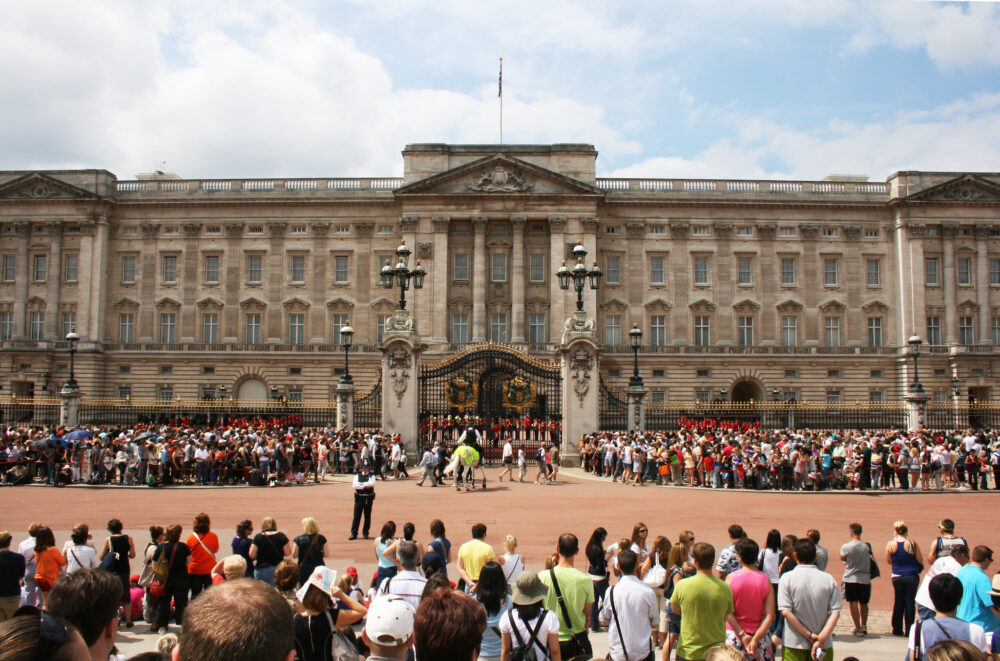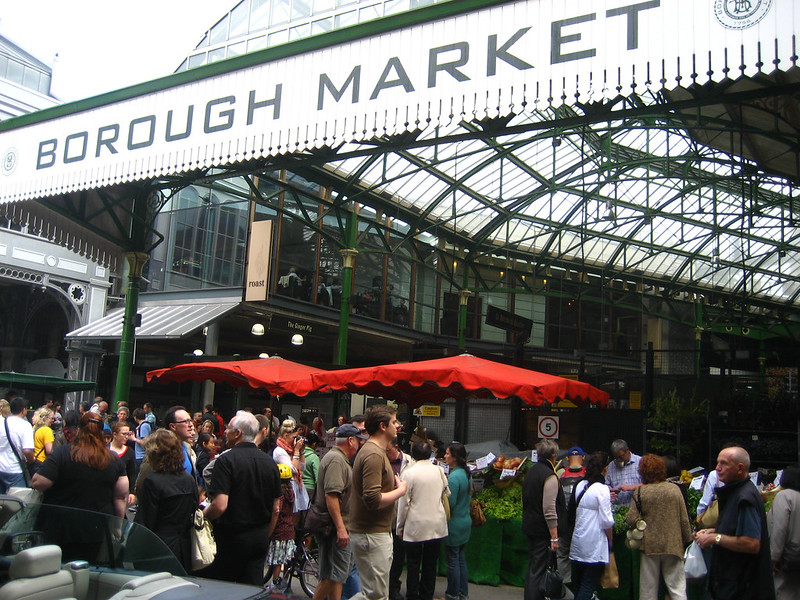There’s enough to see and do in London that even several weeks in the city would barely touch the sides, but for first-time visitors there are a number of attractions that you won’t want to miss.

Crowds gathered outside Buckingham Palace (Photo: Glen Scarborough via Flickr / CC BY-SA 2.0)
When it comes to planning your time in the Big Smoke, it can be hard to see the wood from the trees, but for those coming for the first time, there are several classic tourist sights that would make your trip feel incomplete were they omitted from your itinerary. To help navigate this minefield, we’ve done some of the legwork by choosing 10 must-see attractions. We’ve made our selection as broad as possible to include both indoor and outdoor venues, including a couple of museums, a royal park and a historic open-air market. We’ve also made sure to feature some free options, too, since just a few days in London can hit you hard in the pocket. Here’s our pick below.
Buckingham Palace
The official London residence of His Majesty The King, Buckingham Palace is one of the capital’s most iconic landmarks and one of the few remaining working royal palaces in the world today. Many come to admire the attraction from outside its golden gates, timing their visit to coincide with the famous Changing of the Guard which sees soldiers marching to the palace several times a week. For a more immersive experience, there are also daily self-guided tours which allow visitors to explore the palace’s lavishly furnished State Rooms, as well as its magnificent Grand Staircase and several prestigious pieces of fine art.
Big Ben

Big Ben and the Houses of Parliament seen over the river (Photo: Michael Levine-Clark via Flickr / CC BY-NC-ND 2.0)
Another instantly recognisable London landmark, Big Ben is technically the name given to the huge bell inside the clock tower, but is commonly used in reference to the tower itself, which comprises part of the Houses of Parliament – the heart of the UK’s political decision-making for over 900 years. The riverside attraction can be seen from miles around and is particularly popular as a backdrop for photos from one of the nearby bridges spanning the River Thames. It’s also possible to enter Big Ben by booking a guided tour that takes visitors up 334 stairs to see the clock mechanism room, behind the four clock dials and the Belfry, where the famous bell is located.
Tower of London
Dating back to the 1070s when it was built by William the Conqueror during the Norman Conquest, the Tower of London on the north bank of the River Thames attracts huge numbers of tourists every year. The standard entry ticket invites visitors to explore the ground and enter the legendary tower itself, home to the Crown Jewels of the British Monarchy – said to comprise the largest assemblage of crown jewels in the world. While looking around, the Yeoman Warders, the guardians of the Tower, will provide commentary on the tower’s long history and answer any questions from curious guests. Be sure to keep your eyes peeled for ravens overhead, too.
London Eye

The London Eye set against a glistening sunset (Photo: damo1977 via Flickr / CC BY 2.0)
London is an impressive sight from any vantage point, but perhaps nowhere more so than up high. Visitors keen to see the city from one of its more elevated spots can do so by booking tickets for the London Eye. Also known as the Millennium Wheel owing to the date of its construction at the turn of the millennium, the giant observation wheel on the South Bank of the River Thames transports over three millions visitors on a gentle but thrilling loop each year. As you rise higher and higher, you’ll be treated to sensational unobstructed views across the city from your glass pod.
St Paul’s Cathedral
Over the centuries, St Paul’s Cathedral has played host to many notable national occasions, including royal weddings and funerals. It is also a symbol of the capital’s resilience, having survived wars, fires and numerous other challenges throughout its history. Today the imposing cathedral remains one of the city’s most important landmarks, drawing huge numbers of visitors who come to marvel at its stunning architecture and enduring religious importance. Highlights include Wellington’s Monument, a tribute to one of the country’s leading soldiers and statesmen, and the subterranean crypt where the tombs and memorials of some of the UK’s greatest heroes reside.
Royal Observatory Greenwich

London skyscrapers seen from the lawn at the Royal Observatory Greenwich (Photo: Doug Kerr via Flickr / CC BY-SA 2.0)
Anyone who’s noticed the acronym ‘GMT’ used in relation to the time can discover its origins at the Royal Observatory Greenwich, the historic home of British astronomy, situated in the leafy borough of Greenwich. It is here that the standardised time zone of the UK and a number of other countries in Western Europe and Africa is recorded. It is also the location of the meridian line, a geographical reference line that passes through the observatory and that until 1974 was used worldwide for timekeeping and navigation. Visitors can stand along the Meridian Line with one foot in the eastern hemisphere and one in the west, peer through the Great Equatorial Telescope, the UK’s largest historic telescope.
The British Museum
It’s fair to say that London has its share of rainy days, so it’s certainly worth having some indoor options in your back pocket. That’s where the city’s array of world-class museums often come to the rescue, among which the British Museum stands out as one of the very best. Founded in 1753, the free-to-enter museum in the district of Bloomsbury has a collection of cultural treasures spanning two million years of history. Among the most eminent artefacts on permanent display include Egyptian mummies and the Parthenon Sculptures, as well as regular special exhibitions.
Borough Market

Market-goers at the entrance to Borough Market (Photo: Jeremy Keith via Flickr / CC BY 2.0)
In recent decades, London’s food scene has grown to rival any other city on earth. At the heart of this rich and varied culinary landscape is Borough Market, one of the largest and oldest food markets in London, dating back to at least the 12th century. Today the market is a torch-bearer for London’s status as a true melting pot of cultures, with its mix of local produce and ethnic fare served up by street food vendors. There are also several sit-down eateries surrounding the market, as well as some of London’s most historic pubs. The market is open daily.
The Tate Modern
For art lovers, no trip to London is complete without a visit to Tate Modern. An internationally acclaimed modern and contemporary art museum housed in the former Bankside Power Station on the banks of the Thames, the Tate is simply a world-class cultural venue that captivates all who come here. The impression is instant as you enter the awe-inspiring Turbine Hall that runs the length of the entire building – and that’s before perusing the incredible collection of artwork on display, all of which are organised according to the movement they represent.
Hyde Park
Offering respite from the hustle and bustle of the city, Hyde Park stretches over 350 acres of pristinely-maintained green space in the heart of the capital. The perfect place to kick back and relax after a long day’s sightseeing, the park features a large lake, an eye-catching memorial fountain created in honour of Princess Diana, and an assortment of sports and recreation facilities including a playground, football pitches, tennis courts, a putting green, lawn bowls, horse riding stables and open-air swimming in the Serpentine Lido. The park is also home to Speakers’ Corner, where people are invited to stand on soapboxes and engage in protests, speeches and debates.